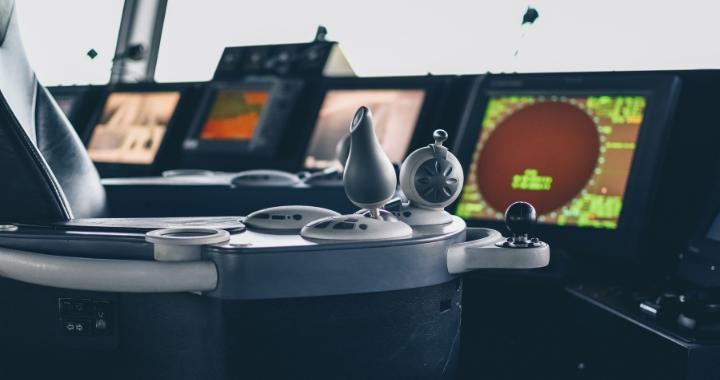We all know that flying an aircraft is an exhilarating experience. However, before taking to the skies, pilots must ensure careful planning, adherence to regulations, and the possession of essential documents and equipment. Pilots must also consider weather conditions, plan flights meticulously, and comply with air traffic control procedures. Understanding the rules and regulations governing different airspaces is crucial for safe and efficient navigation.
In line with the above information, this post is dedicated to talking about when ADS-B is required in aviation, what it is, how it works and so much more. Let’s dive right in, shall we?

When is ADS B Required?
In several regions worldwide, ADS-B has been made mandatory to enhance airspace efficiency and safety. One such country is the United States, where the Federal Aviation Administration (FAA) mandated that all aircraft operating in the most controlled airspace must be equipped with ADS-B Out by January 1, 2020.
This requirement applies to aircraft flying in Class A, B, and C airspace, as well as Class E airspace above 10,000 feet mean sea level (MSL) over the contiguous U.S. Additionally, ADS-B Out is also required within 30 nautical miles of most busy U.S. airports. The requirement is in accordance with the 14 CFR (Code of Federal Regulations) Part 91.225 and 91.227.
Furthermore, ADS-B is also required within certain airspace areas known as the ADS-B rule airspace, which includes the Gulf of Mexico. As well as around busy airports and in crowded metropolitan areas. These designated areas have a high density of air traffic. And ADS-B helps to improve traffic management and ensure the safe separation of aircraft.
What Is ADS B in Aviation?
ADS-B, or Automatic Dependent Surveillance-Broadcast, is a surveillance technology that uses an aircraft’s GPS receiver to determine its precise location, altitude, and velocity. This information is then broadcasted periodically to other aircraft, air traffic controllers, and even ground stations. ADS-B also offers additional functionalities such as the extended squitter, which provides more detailed aircraft information.
It provides more accurate and reliable positioning information compared to traditional radar-based systems. This enables pilots to visualize the traffic around them accurately, even in remote areas or at low altitudes where radar coverage may be limited. Consequently, this enhances flight safety by reducing the risk of mid-air collisions and allows pilots to take appropriate actions to avoid potential conflicts.
For air traffic controllers, ADS-B significantly improves surveillance capabilities by offering more precise and up-to-date aircraft positions. They can promptly identify any potential conflicts and provide more accurate traffic information to pilots. Consequently, ATCs can better manage airspace and optimize routing, leading to more efficient use of air traffic resources.
In contrast to traditional transponders, ADS-B offers several distinctive features. ADS-B provides a more extensive coverage range since it is not limited by radar line-of-sight constraints. Aircraft equipped with ADS-B Out can be precisely tracked even in areas without radar coverage, such as oceanic regions or remote mountainous areas.

How Does ADS B Work?
So, how does ADS-B work?
Aircraft data generation:
The first step involves the aircraft’s avionics system generating data, which includes its position, altitude, speed, heading, and other relevant information. This data is sourced from onboard GPS (Global Positioning System) receivers and other aircraft sensors.
Data transmission:
Once the data is generated, the ADS-B system broadcasts it periodically from the aircraft to other nearby ADS-B receivers. The transmission occurs on a dedicated frequency, typically 1090 MHz for air traffic control (ATC) monitoring or 978 MHz for general aviation aircraft operating within the United States.
ADS-B receivers:
On the receiving end, ground-based ADS-B receivers or other aircraft with ADS-B In receivers capture the broadcasted data signals. These receivers are strategically positioned across the airspace to ensure comprehensive coverage, providing continuous monitoring regardless of radar coverage limitations.
Data processing:
After collecting ADS-B data, the receivers forward it to air traffic control systems, which process and integrate it with radar data and other surveillance sources. This enables controllers to have a comprehensive and accurate picture of the airspace, enhancing situational awareness.
Now, let’s discuss what information ADS-B provides and its accuracy.
Aircraft Identification:
ADS-B transmits an aircraft’s unique identification code, which allows efficient tracking and identification of individual aircraft.
Position and Altitude:
ADS-B accurately provides the precise GPS-based position and altitude of an aircraft, allowing ATC to monitor the aircraft’s location in real time.
Speed and Heading:
ADS-B also broadcasts the aircraft’s speed and heading information. This data aids in determining an aircraft’s intentions, facilitating more efficient air traffic management.
Weather and Traffic Information:
Additionally, ADS-B can include weather and traffic information sourced from other aircraft or ground-based weather stations. This data helps pilots and controllers make informed decisions to ensure safer navigation.
ADS B Requirements
The specific requirements for ADS-B installation and usage vary depending on the air space type. Here, we will discuss the ADS-B requirements for different airspace types:
Class A Airspace
Class A airspace includes all airspace from 18,000 feet mean sea level (MSL) up to and including flight level 600. In this airspace, aircraft are under positive control, and separation is provided by air traffic control (ATC). ADS-B is mandatory for all aircraft operating in Class A airspace. The requirement is to be equipped with a 1090 MHz extended squitter (ES) transponder. As well as a GPS receiver that provides accurate position information for ADS-B.
Class B Airspace:
Class B airspace surrounds the busiest airports and is designed to provide separation for all IFR and VFR operations. ADS-B is required for all aircraft operating within Class B airspace, regardless of altitude. The aircraft must have a 1090 MHz ES transponder and comply with ADS-B Out requirements.
Class C Airspace:
Class C airspace typically encompasses airports with moderate traffic activity. ADS-B is mandatory for aircraft operating within Class C airspace, including both IFR and VFR operations. Similar to Class B airspace requirements, aircraft must be equipped with a 1090 MHz ES transponder and comply with ADS-B Out requirements.
Class D Airspace:
Class D airspace surrounds airports with control towers but has lower traffic density compared to Class C airspace. ADS-B is required for aircraft operating within Class D airspace when ATC deems it necessary for improved separation and overall safety. As with previous airspace classes, aircraft need to be equipped with a 1090 MHz ES transponder and comply with ADS-B Out requirements.
Class E Airspace:
Class E airspace is found in various areas and includes airspace not classified as Class A, B, C, D, or G. ADS-B requirements in Class E airspace depend on the altitude and specific conditions:
- Above 10,000 feet MSL: ADS-B is mandatory for all aircraft, including both IFR and VFR operations. They must be equipped with a 1090 MHz ES transponder and comply with ADS-B Out requirements.
- Below 10,000 feet MSL, but above 2,500 feet AGL: ADS-B is required for aircraft operating in this range, but only for IFR operations. VFR operations are exempt from ADS-B equipment.
- Below 10,000 feet MSL and below 2,500 feet AGL: ADS-B is not required, but it is recommended as it enhances situational awareness for pilots.
Class G Airspace:
Class G airspace includes airspace not specifically designated as any other class. ADS-B is not mandatory for aircraft operating in Class G airspace. However, equipping with ADS-B is strongly encouraged to enhance situational awareness and safety for all operations. Especially in areas with high traffic concentration.

ADS B Exemptions
- Aircraft Operating Below 10,000 Feet: In certain cases, aircraft operating exclusively below 10,000 feet may be eligible for an exemption from ADS-B Out requirements. However, it is important to note that the exemption only applies to airspace areas that do not require a transponder.
- Aircraft Operating in Remote Areas: Such exemptions take into account the lack of ground-based surveillance capability in those regions.
- Aircraft Operating Internationally: Some operators, particularly those conducting international flights, may be granted ADS-B exemptions in certain countries or regions where the technology is not yet fully implemented. This allows for continued international operations without the need for immediate ADS-B compliance.
- Aircraft with Incompatibility Issues: Aircraft that are unable to equip with ADS-B Out due to technical issues may be eligible for exemptions. However, operators need to apply for these exemptions and seek alternative means of compliance wherever feasible.
ADS-B is a game-changer in aviation surveillance and communication.
ADS-B is a crucial technology that significantly improves safety and efficiency in the aviation industry. Pilots and air traffic controllers benefit from enhanced situational awareness and more accurate traffic information. By mandating ADS-B for certain aircraft operating conditions, the United States ensures a higher level of safety and orderliness in its airspace.
So the next time you plan a flight, remember to check whether your aircraft needs to be equipped with ADS-B technology to comply with the regulations. And contribute to a safer and more efficient airspace system.
For more information on all things around aviation technology from the international flight plan format to how to calculate landing distance, check out our blog. While you’re at it, check out our varying options of JetBeds to see which one perfectly fits your aircraft.

